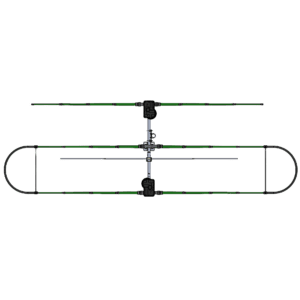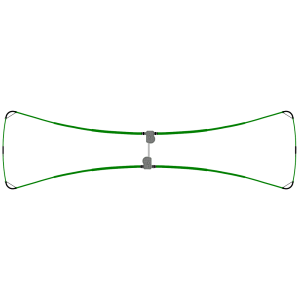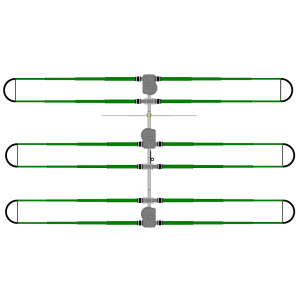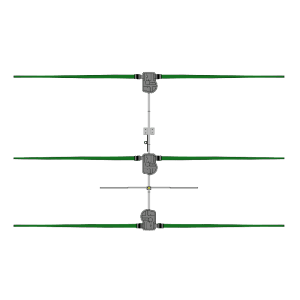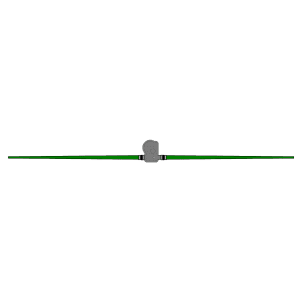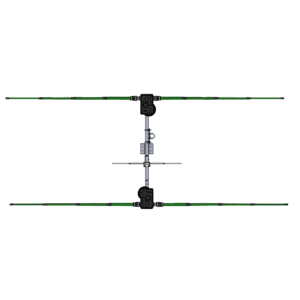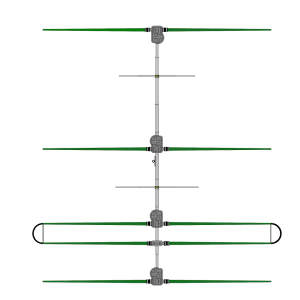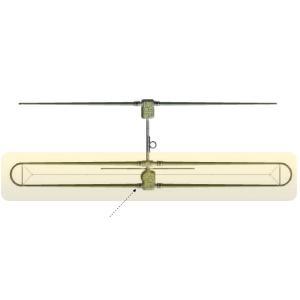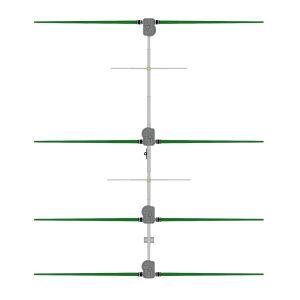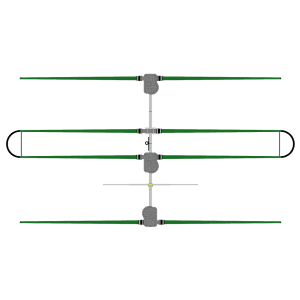Description
DB18 Yagi antenna uses loop elements for 30m and 40m performance.
The DB18 and DB18E are the most popular antennas in the DB line, due to their performance vs. size profile. The loop elements used for 40 and 30m are 40% shorter than a full size element would be, with very little sacrifice in performance (-0.4dB).
The DB18 uses an integral coax switch to select which one of the three elements are driven to give equal performance in forward and reverse directions. The control of the Antenna and Coax switch is integrated into the SDA 100 controller (standard on DB18) for effortless tuning.
The only difference between the DB18 and the DB18E is on 30m – the DB18 has two elements on 30m, making it a wide spaced high gain dipole with very little front to rear. The DB18E has 3 elements on 30m, making it an optimally spaced Yagi with solid gain and excellent front-to-rear ratios.
- Dreambeam DB18 Yagi
- 3 el 20m-6m
- 2 el 40/30m
- 18 ft boom
- Controller options:
-
DB18 DB18E Weight 96 lb / 43.5 kg 110 lb / 49.9 kg *Projected Area 18.36 sq ft / 1.71 sq m 22.17 sq ft / 2.06 sq m Longest Element 39 ft / 11.9 m 39 ft / 11.9 m Turning Radius 21.58ft / 6.57 m 21.58ft / 6.57 m Boom Length 19 ft / 5.79 m 19 ft / 5.79 m Mast Hardware 2.0 in/ 5.08 cm 2.0 in/ 5.08 cm Power Rating 3 kW 3 kW Wind Rating 100 mph / 160 km/h 100 mph / 160 km/h Frequency Coverage 6.95 MHz—54 MHz 6.95 MHz—54 MHz Cable Requirements 16 conductor 22 ga shielded 16 conductor 22 ga shielded Tuning Rate 1.33 ft/sec - 0.4 m/sec 1.33 ft/sec - 0.4 m/sec -
* with 6m passive element kitDB18 DB18E Band dBi Gain (Freespace) dB F/R (Freespace) dBi Gain (Freespace) dB F/R (Freespace) 40m 6.2 20 6.2 20 30m 5.4 N/A 7.0 20 20m 7.4 25 7.4 25 17m 8.3 25 8.3 25 15m 8.5 20 8.5 20 12 m 8.8 15 8.8 15 10 m 9.0 11 9.0 11 6 m 6.2 (10.1)* 4 (30)* 6.2 (10.1)* 4 (30)*
*Projected area is the total perpendicular surface area measured in square feet/square meters, that is exposed to wind. To calculate wind load you always take the largest projected area whether that is from the perspective perpendicular to the boom or perpendicular to the elements. In the case of SteppIR Yagi’s, the maximum projected area will always be the sum of the surface area’s perpendicular to the Yagi elements. This calculation is a constant number and will not change regardless of EIA specification changes. Do not mistake this projected area calculation as anything more than a data point to present to your structural engineer, tower manufacturer or rotator manufacturer so that they can determine what is necessary for your application.
When sizing an antenna to a tower, many factors need to be taken into consideration including, but not limited to: projected area of antenna in square feet or square meters, weight of the antenna and other items on tower, turning radius, element lengths, antenna height, location exposure category, locations three-second gust wind-speed, locations maximum radial ice loading.
Improper specification of an antenna or rotator to a tower can result in product failure, injury or death. SteppIR is not an expert on tower or rotator sizing and for this reason will never make any kind of a recommendation – this specification process is meant for industry professionals such as a structural engineer, tower manufacturer or rotator manufacturer. Please do not attempt to self-specify our products – the information provided by SteppIR is to be utilized by industry professionals only.

